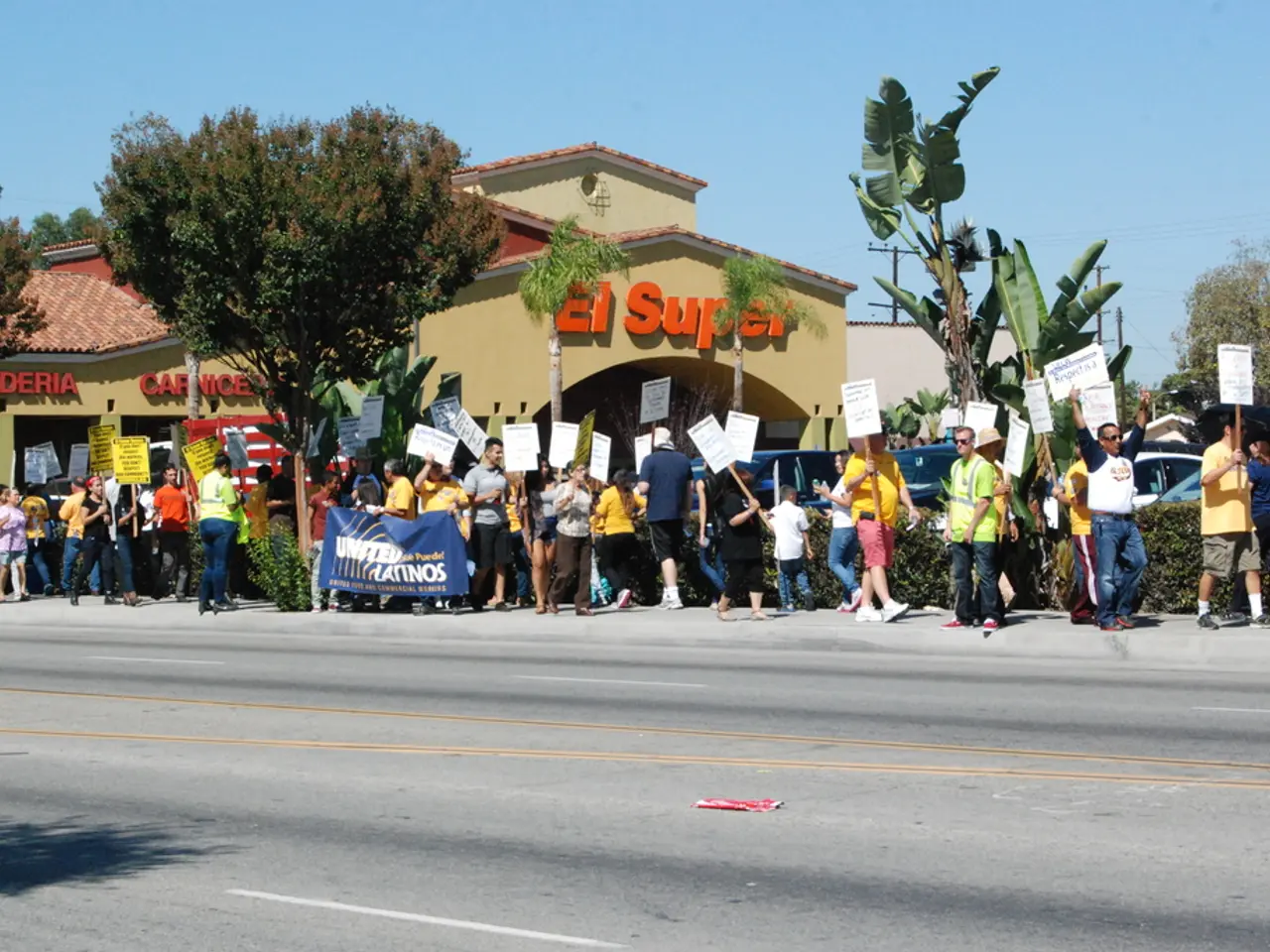Intense Resource Demand in Political Campaigns: Aiming for Maximum Impact
In the dynamic world of modern political campaigns, a strategic blend of traditional and digital strategies is essential for success. Here are some key factors to consider:
## Traditional Strategies
### 1. Party Funding and Expenditure - Focus: Traditional party funding and expenditure remain important components of political campaigns. For instance, the Supreme Court of the United States is currently considering overturning restrictions on party coordinated spending, which could increase the influence of political parties in campaign financing [1]. - Advantage: Allows parties to coordinate more closely with candidates, potentially increasing the effectiveness of funding.
### 2. Traditional Media Advertising - Focus: Continued use of television, radio, and print media to reach a broad audience. - Advantage: Crucial for reaching those who are less likely to be online.
### 3. Real-life Activities - Focus: Organising meetings, rallies, and other offline events to connect with voters. - Advantage: Strengthens voter trust and engagement.
## Digital Strategies
### 1. Social Media and Digital Marketing - Focus: Utilising platforms like Facebook, Twitter, and Instagram to disseminate information and build supporter networks. - Advantage: Allows for precise targeting of specific demographics, increasing information dissemination efficiency.
### 2. Text Banking - Focus: Utilising text platforms, such as CallHub, to interact with voters through automated assignment and relationship organisation [2]. - Advantage: Strengthens connections with voters, increases information dissemination efficiency, and builds trust and support through networks.
### 3. Data Analysis and Voting Predictions - Focus: Using data analysis to optimise campaign strategies and predict election outcomes, such as using predictive models like those in gambling markets [4]. - Advantage: Helps in optimising resource allocation and increasing strategy effectiveness.
## Financial Management and Compliance ### 1. Fundraising Management - Focus: Strengthening fundraising oversight to prevent foreign interference, ensure the legality of campaign funds [3]. - Advantage: Increases election transparency and security.
## Integrating Strategies
In the digital age of political campaigns, balancing traditional and digital strategies is crucial. Effective resource allocation, while adhering to legal and regulatory requirements, can maximise a campaign's impact.
- Artificial intelligence and machine learning for predictive analytics or personalised messaging require software, hardware, and skilled talent. - Key elements in political campaigns include financial support, staffing, and technology. - Volunteer recruitment is essential for a well-staffed team, necessary for organising events, canvassing voters, and managing communications effectively. - Engaging in campaign-related activities can provide practical experience and expand a student's network. - Prioritising initiatives based on potential impact and alignment with goals helps maximise impact with limited resources. - Integrating social media platforms increases visibility, engagement, and trust with the electorate. - Modern political campaigns incorporate a multifaceted approach, blending traditional grassroots organising with digital strategies. - Political campaigns in the digital age require substantial investments in time, capital, and expertise for advanced technologies, data analytics, and communication platforms. - Avoiding mixing official business with political campaigning activities prevents conflicts of interest. - Limited resources can significantly hinder campaign effectiveness, restricting advertising opportunities or forcing candidates to scale back on essential campaigning activities. - Creating an inclusive work environment fosters collaboration, celebrates diversity, and boosts morale and motivation. - Developing a comprehensive resource allocation plan that aligns with campaign priorities and objectives is important for efficient resource management. - Optimising resource utilisation by concentrating on high-impact activities is essential for making the most of limited resources. - Effective navigation of modern political landscapes requires financial resources, strategic foresight, technological acumen, and a deep understanding of the electorate's needs and concerns. - Efficient resource allocation is paramount in achieving campaign objectives, allowing for better targeting, increased voter turnout, and enhanced visibility. - The dynamic nature of political landscapes necessitates agility and responsiveness, requiring continuous investment in research, monitoring tools, and content creation. - Automation software streamlines campaigning processes, improves efficiency, and reduces human error.
- To optimize results in political campaigns, data analytics plays a vital role in predictive modeling and personalized messaging, requiring the right resources such as software, hardware, and skilled talent.
- Financial support, staffing, and technology are key elements in ensuring a successful campaign, and artificial intelligence and machine learning are valuable tools for data analytics.
- Volunteer recruitment is essential for a well-staffed team, allowing for the organization of events, canvassing of voters, and effective communication management.
- Engaging in political campaign-related activities can provide students with practical experience and network expansion in the field of education and self-development, particularly in areas such as personal growth.
- Campaigns should prioritize initiatives based on potential impact and alignment with goals to maximize impact with limited resources.
- Integrating social media platforms can increase visibility, engagement, and trust with the electorate, especially in areas like entertainment and general news.
- Modern political campaigns employ a multifaceted approach that combines traditional grassroots organizing with digital strategies such as social media and digital marketing.
- Political campaigns in the digital age necessitate substantial investments in time, capital, and expertise for advanced technologies, data analytics, and communication platforms, while also adhering to policy and legislation regarding cybersecurity and maintaining transparency.




